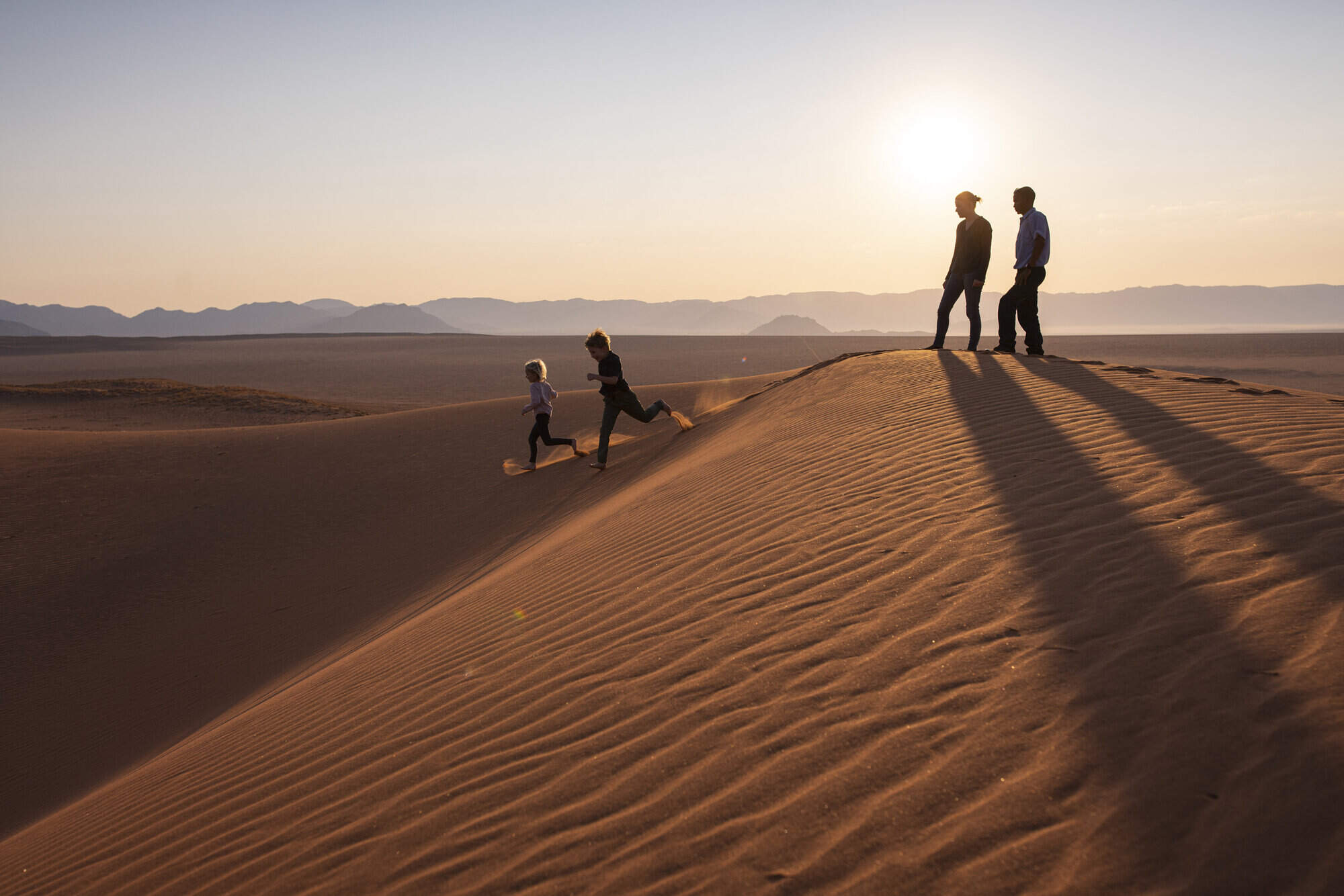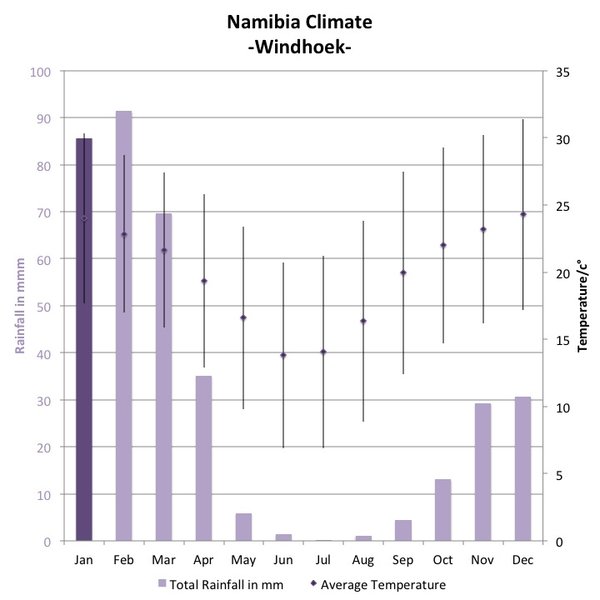January: a rainy month with high humidity levels.
February: one of Namibia's wettest months of the year; great for bird-watching.
March: the third and last month of the rainy season is wet and humid.
April: a very fresh, green month; some rain but also lots of clear weather.
May: a favourite month: the landscape is usually beautiful and green, the air very clear.
June: a dry month with very little chance of rain. Warm days but cold nights.
July: nights can be cold, but the days are warm and clear.
August: a lovely and dry month, but temperatures can still plummet at night.
September: dry, warm days and cold nights gradually heat up as the month progresses.
October: one of the the hottest and driest months of the year.
November: very variable: maybe hot and dry, but with showers looming towards the end.
December: an unpredictable month during the transition from dry to rainy season.













